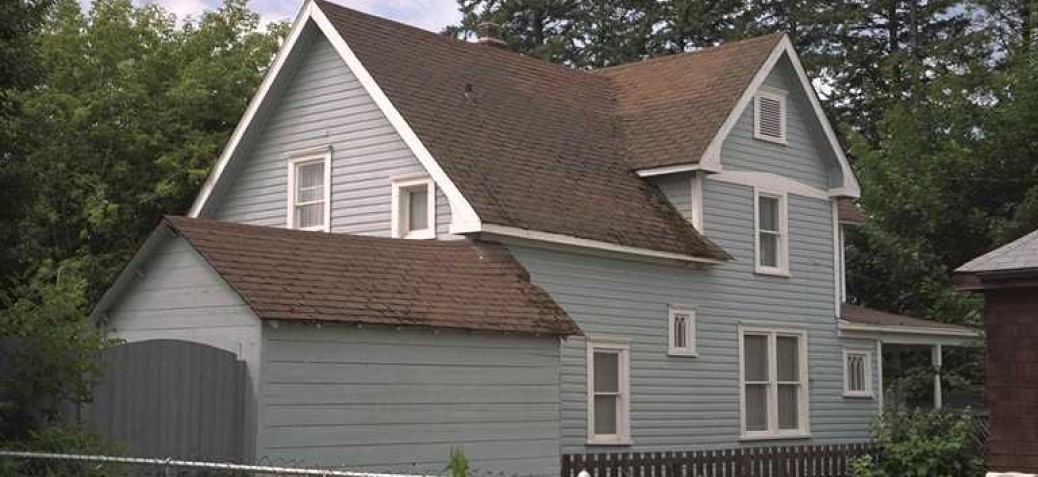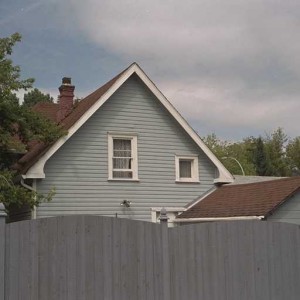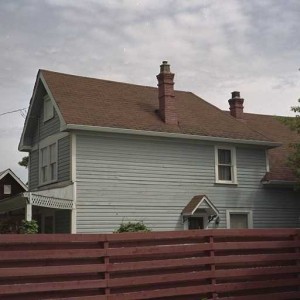Bouvette House
Place Description
The Bouvette House is a two and one-half storey long, narrow, wood-frame Queen Anne Revival residence with a front gable roof and wraparound verandah. It is set in close proximity to the front lot line, on the east side of Pandosy Street just north of Cadder Street, screened from the road with a fence and mature maples.
Heritage Value
The Bouvette House is of heritage significance for its association with its first owner, William Frank Bouvette. Typical of the early pioneers of Kelowna, Bouvette worked at a variety of occupations as conditions and circumstances dictated in the growing community. He arrived at Okanagan Mission (the site of Father Pandosy's Oblate mission, south of the present city) in 1884. Bouvette was a mail contractor and drove a stagecoach between Kelowna and Vernon. From 1906-10 he logged at Westbank on contract to the Kelowna Sawmill Company. After the death of his wife, Rose, in 1910, he bought this newly-built house in Kelowna and operated a livery stable and a fleet of drays.
Built in 1910, the Bouvette House is valued as a good example of the Queen Anne Revival style, a style popular across North America around the turn of the century but less commonly found in Kelowna due to the city's development after the period of its greatest popularity. The references to the Queen Anne include the overall L-plan with a wraparound verandah and a front-facing gable with decorative shingles. This comfortable and modest house exemplifies the architecture of Kelowna's middle class residents during the early years of the twentieth century. The existence of another similar home on the same block indicates its origins as a speculative-built house and the likelihood of these two houses being built from a pattern book design.
Character Defining Elements
Key elements that define the heritage character of the Bouvette House include its:
- orientation to the street, with minimal set back from the front property line;
- residential form, scale and massing as expressed its two-storey height and compound L-shaped plan of rectangular proportions, with rear extension;
- gabled roof with whale-bone cornice returns, closed eaves and two corbelled brick chimneys;
- wood-frame construction with wooden drop siding and cornerboards;
- exterior elements such as its open, full-width wraparound verandah with lathe-turned columns, pointed window surrounds and front gable belt course with pointed profile; and
- fenestration, with double-hung 1-over-1 wooden-sash windows, some in double-assembly.






